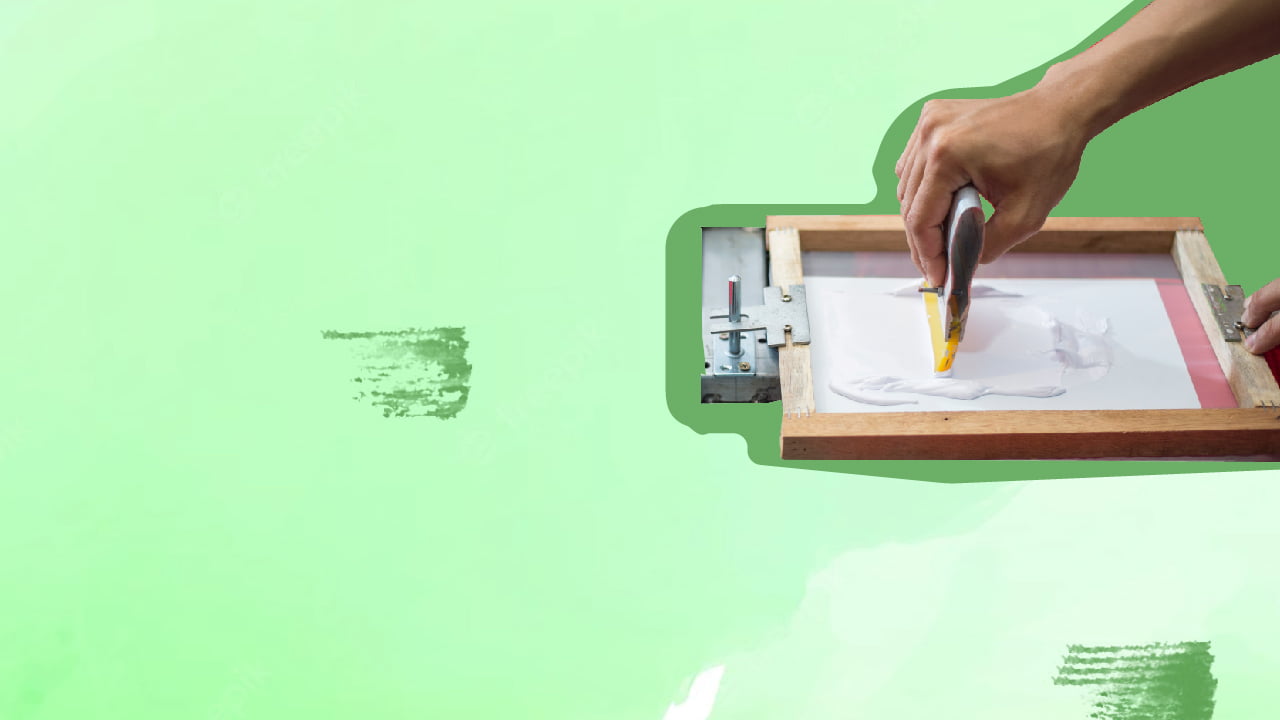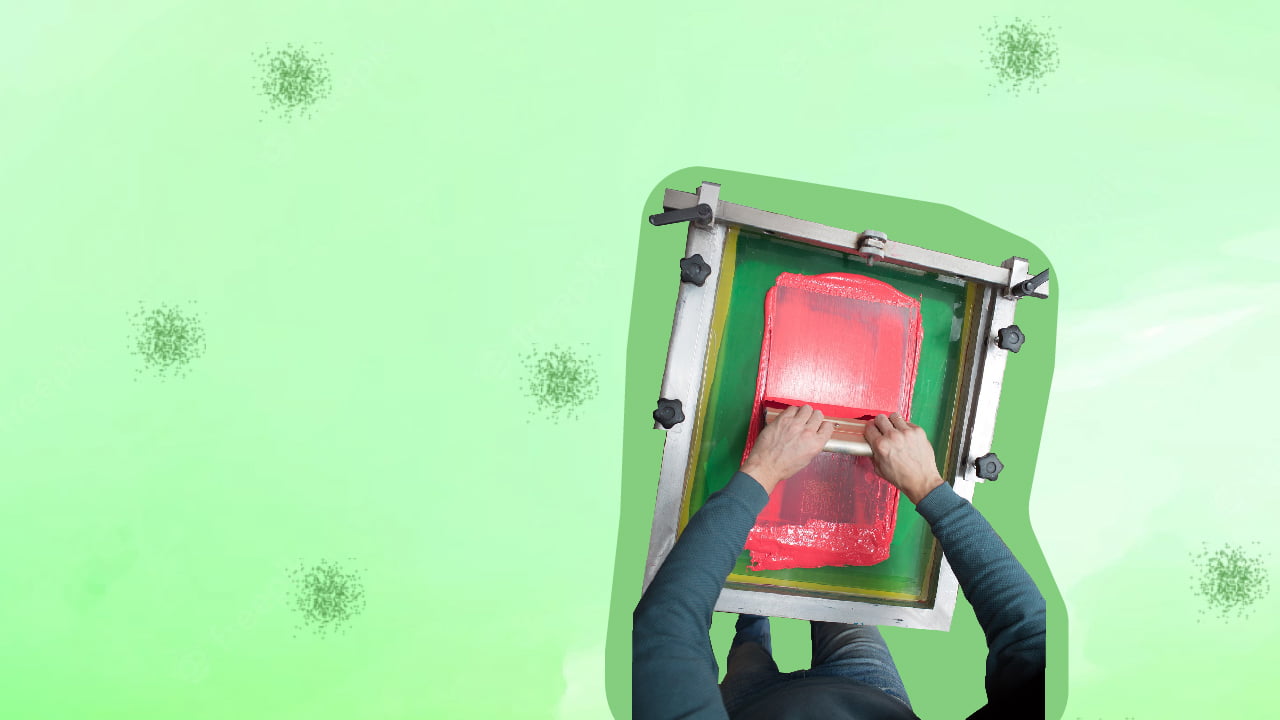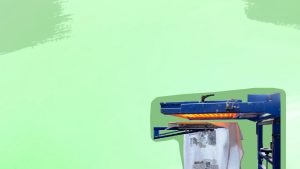Different Types Of Screen Printing Process | All You Need To Know
Screen printing is one of the most prevalent and time-tested printing methods. Its ability to produce brilliant color prints on both light and dark fabrics makes it a preferred printing method. There are different types of screen printing processes that can easily adapt to your requirements like grayscale printing, CMYK printing, and more. While screen […]

Screen printing is one of the most prevalent and time-tested printing methods. Its ability to produce brilliant color prints on both light and dark fabrics makes it a preferred printing method. There are different types of screen printing processes that can easily adapt to your requirements like grayscale printing, CMYK printing, and more.
While screen printing may be done manually, especially for short print runs, it is most typically done automatically. You can use screen printing machines that utilize modern inks and substrates in conjunction with digital technology to bulk print.
One of the most significant benefits of screen printing is the ability to print on practically any surface, including fabric, parchment, glass, wood, card, plastic, and leather.
This article will describe the different types of screen printing processes, including how each method works, the procedure, and the results. These processes are commonly utilized by screen print firms worldwide.
What Is Screen Printing?

The substance used to generate the design is the primary distinction between screen printing vs laser printing. Ink is used in screen printing, while a toner (or powder mix) is used in laser printing.
That said, the screen printing method is among the most well-known and commonly utilized methods in print shops. In this process, screens impart multi-color printing on clothing and other textiles throughout the procedure.
Also known as silk screen printing, it is a flexible and effective printing technology that allows you to create custom T-shirts with high quality prints and a silky feel. Furthermore, since the inks get fully absorbed into the cloth, one can expect bold colors and maximum endurance.
According to specialists, this is one of the oldest ways of T-shirt printing, dating back to ancient China. However, it gained popularity in the twentieth century when Andy Warhol used screen printing techniques to make his famous Marilyn Monroe image.
Why Should You Buy A Screen Printing Machine?
The screen printing business is a rising sector in the United States and is used for much more than just printing t-shirts.
Screen printers all over the globe are producing materials for marathons, sporting events, school systems, unions, city municipalities, and a variety of other clientele. In fact, screen printing also has several uses in technologies, consumer electronics, automobiles, construction materials, and other sectors.
And the emergence of easy and inexpensive online retailers and on-demand digital hybrid printing has sparked a new gold rush to discover the finest option for quick delivery of custom t-shirts and other printed items.
A manual screen printer is now used less often because of the introduction of automatic screen printing equipment. Rather than requiring a human to draw the squeegee thousands of times (causing weariness, fatigue, and even developing carpal tunnel syndrome), the machine pulls the wiper with uniform speed, pressure, and angle every time.
How Do Screen Printing Machines Work?
Most automated screen printing presses print an image on t-shirts using a set of mechanical squeegees that draw ink through some nylon mesh screen. The t-shirts are kept on revolving print pallets, which move around the machine until full color images have been printed on the shirt.
The print stations of a standard screen printing machine are positioned like spokes on a bike wheel around a spinning pneumatic hub. Each spoke symbolizes a different print station.
Screen printers will identify machines based on their number of screens and platens. For example, a “6/4 press” is a silk screening machine with six screens and four stations. Automatic screen printing devices follow the same fundamental idea.
There’s a lot of diversity, from gigantic egg-shaped screen printing machines meant for heavy printing in Asia to small automated screen printing machines for novelty products like beer koozies and caps.
That said, you can find two screen printing machine types: manual and automated. The distinction is that an automated push drags the squeegee over the surface in case of the latter.
When a screen printing company is large enough, it usually starts with a manual press and switches to an automatic press to print effectively.
Tip
To print efficiently, screen printers require cooling stations (where the shirt printing is momentarily paused before being imprinted on again) and flashing areas (where the shirt absorbs the initial colors for greater printability).
What Is The Process Of Screen Printing?
The process of screen printing consists of six steps:
1. Creating A Design
The first step in the screen printing process is creating a design using tools such as Illustrator. Before developing your design, ensure your document is in the proper format. Size is critical, and you’ll want to ensure that you can adjust the image to fit the print area. Finally, print the design on a transparent acetate film.
2. Formatting The Files
Vector files are required to produce a flawless print. These files are numerical computations that form lines and numbers on monitors. In contrast to dealing with pixels, you may enlarge or reduce these vectors in any way you wish without affecting the image quality.
In addition to being exported as vectors, the artwork must be divided for each color on a distinct layer. This is because each tone is produced using a different screen during the screen printing process.
3. Preparing The Screen
A photosensitive emulsion must be applied to the screen. This produces the green backdrop you may have noticed when silkscreen printing. It is a basic procedure that must be carried out with caution to ensure that the liquid is dispersed equally.
The photosensitive emulsion must dry in a cool darkroom before use. After all, the entire process may be jeopardized if the emulsion is subjected to light at the incorrect moment.
4. Stencil Creation
When the screen is dried, the acetate film is placed on top and attached with an adhesive. The display is then put in front of a powerful UV light source. After prolonged exposure, you’ll notice the sections of the screen not covered by the design will turn stiff. As such, you will be left with an imprint of your design for the ink to pass through.
5. Separating The Color
If your design contains more than one color, the procedure is repeated to divide each color into independent layers on various displays. For two colors, you’ll need two screens.
6. Begin Printing
Once the screen preparation is complete, it’s time to begin printing. The T-shirt will be carefully placed in the screen printing machine, with the screen on top. Then, the pigment will be applied to the screen and spread uniformly throughout the area with a squeegee.

What Are The Different Types Of Screen Printing Processes?
Following are the different types of screen printing methods to try out:
1. Grayscale Printing
Grayscale printing is an excellent screen printing method for producing one-color grayscales or halftones from full-color photos. Photographs in full color can be reproduced as a one-color-halftone combination. You may also use a one-color halftone to create full-color drawings with various hues.
Typically, it is done using black ink on a light fabric, but you can also use any other color ink. A resolution will be determined by the number of lines per inch employed in the dot pattern.
The more dots in a halftone, the more realistic the print. It is an excellent low-cost screen printing technique for printing black-and-white images on clothes.
Advantages Of Grayscale Printing
- Images in bright and dark grayscale are inexpensive
- Excellent print quality
2. Spot Color Screen Printing
The most frequent form of t-shirt printing is spot color screen printing. It prints the ink stock color through the screen stencil. Based on the ink and mesh count, it generates a vivid solid area of color and a thicker ink coating.
With the help of a spot color screen printing machine, you can easily print one to four colors. It is quite effective in printing darker garments. Other printing processes, such as the simulated printing process, might be a better alternative if you want more spot colors.
Spot colors may offer a more colorful and detailed print since they can overlay many hues, and perhaps this is why it is one of the best screen printing techniques. In addition to the range of possibilities, spot colors give significantly better uniformity from print to print.
When printing a solid color using process inks, minor color balance fluctuations may impair the uniformity of the color. While spot colors are more expensive, they may add a bunch of bright hues to your project, making the extra expense worthwhile.
Advantages Of Spot Color Screen Printing
- Vibrant, raw color prints on a variety of fabrics and clothing can be done through spot color printing
- Gives you total color control, resulting in sharp, clear, and well-organized output
3. CMYK Printing
The earliest color reproduction print technology is CMYK. In this printing method, the screen printers print graphics on white or light clothes using cyan, magenta, yellow, and black ink.
This is still a feasible print technique for light-colored clothing for people experienced in CMYK file processing, screen generation, and Photoshop.
One of the most sophisticated screen printing procedures, CMYK printing, should be performed on an automated press. It can be performed manually, but an automatic t-shirt press is required for the best results.
The printing process involves mixing the four colors listed above to replicate the complete tone and color range of the original image. Just keep in mind that it is a costly procedure compared to other printing methods.
Advantages Of CMYK Printing
- It works well with light-colored or white clothing
- Prints have the same quality as images with more than four different colors
4. Halftone Printing
Halftone prints are either one or several color prints with gradients. These tones might be solid spots or halftones that are of the same hue. This screen printing approach is ideal for creating the appearance of multi-color printing without actually performing it.
The screen printing process highlights the use of coloring with small dots. And images may be created with halftone silkscreening, only utilizing a single color. For example, if you want a pink radiant color on a white t-shirt, print red on a white shirt with a 50% gradient.
Using only one screen and one hue, the 50% gradient will blend with the white shade to give it a pink appearance.And printing directly onto the garment will increase the graphic quality and create a softer feeling print.
Advantages Of Halftone Printing
- It is economical since just one type of ink is required
- This screen printing technique varies from others as it employs only one color to achieve “appearingly” different shadings
5. Duotone Color Hue Printing
Duotone printing, often known as multitone printing, combines two halftones to create a two-color picture. A black halftone is first printed on white shirts, followed by a second halftone printed in color ink.
The duotone color hue is created by combining the color and black halftone. It adds a retro appeal when printed on light-colored textiles and gives the illusion of a full-color print at a considerably lower cost. When printed onto a light garment, it also gives a softer feel.
This procedure necessitates using special inks, generally PANTONE-designated colors, rather than the regular CMYK inks used only for process color printing.
Advantages Of Duotone Printing
- Light materials and garments are suitable
- It lends a sophisticated and artistic touch to the complete print
6. Simulated Process Printing
A simulated printing process is a technique for reproducing practically any picture available on the market. It overlaps and combines colors like CMYK by employing halftones, spot colors, and PMS colors.
Essentially, it is a method of printing an image that would have previously been printed using CMYK. Instead, it employs thick ink to generate a much more steady hue and manufacturing-friendly ink that can print practically any pattern for any garment.
Furthermore, it is frequently used to print intricate graphics on black-colored clothes.
Advantages Of Simulated Screen Printing
- The finished print is vibrant, alive, and finely detailed
- It is extensively utilized due to its suitability for both deeper and lighter colors

Types Of Screen Printing Process Final Words
Screen printing is an old, popular, and straightforward process that’s relevant in the printing industry even today.
You can utilize any common screen printing technique to print t-shirts, create artworks, posters, and more. And of course, the best screen printing machine makes screen printing suitable for both individual and bulk orders.
As such, go through different types of screen printing processes listed above and select the best one based on your requirements. And with that, I’ll call it a day!
If you’ve found this article insightful, you may also consider checking out my article on “how to program sliding gate remote.”
